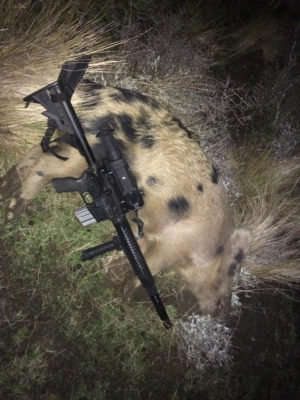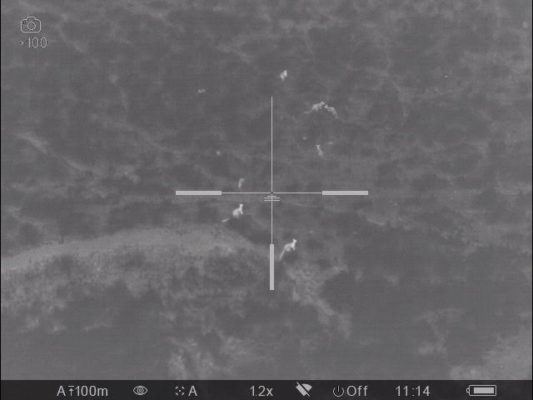When Sam Staley went to the Defence Force’s Tekapo Military Training Area back in 1996 to run the Military Camp and Training Area for a three year stint, one of the tasks at the time was pest control.

Today, 22 years later, he’s still there, and so are some of the rabbits, but after two decades of the comprehensive rabbit control operation which Sam initiated, the rabbits are nothing like the problem they used to be on the 19,000 hectare military site.
“The training area is unique,” Sam says. “It’s a very special bit of dirt! It’s probably the most intensively managed, non-grazed piece of high country land in Canterbury. It includes unique and nationally threatened plants and native fauna like alpine weta, rare butterflies and moths and many endangered vertebrates such as the Mackenzie Basin skink.”
With rabbits controlled, if not eliminated, Sam began to look further afield with his predator control work.
“When I started here, it was before the calicivirus release. The virus left us with a lot of hungry predators and no rabbits, so we had to change our focus. I had to then spend more time looking at other predators” he says. “We now control species such as possum, ferrets, stoats, hedgehogs and cats as part of our overall pest control programme which is primarily targeted at rabbits, hares, and of late, wallaby; and also black backed gulls when they nest in proximity to native wading birds and black fronted terns.”
Sam’s background is a mixture of the army and high-country farming and his predator control methods reflect that.
“Before the army asked me to go to Tekapo I was working in the Upper Rangitata area,” he says.

“My predator control includes the traditional method of “dog and a gun” and it’s a pretty effective, but we also utilise traps and poisons as appropriate. We operate what I call in beaurocratic speak, “integrated pest management”. For example, at the moment I’m cutting wilding pines trees at about 2000 metres (above sea level). While I’m doing that, my dog is running around looking for ferrets and stoats and I’m keeping an eye out for wallabies as well.”
Wallabies are spreading in the South Island high-country and increasingly becoming a problem.
“I’ve shot 30 on the property in the last 5 years,” Sam says. “In the previous 17 years there were none.”
Pigs are also a potential issue, with hunters, and unfortunately, even some farmers releasing them for hunting.
“Pigs are a real problem for farmers and conservationists,” Sam says. “We need to develop innovative and pragmatic solutions to wallaby and pig control.”
While Sam’s methods have been traditional until recently, his sons who have grown up in the military/high-country environment, have embraced the very latest military/hunting technology in their own predator control company.
“They’re all shooters,” Sam says of his three sons, ranging in age from 17 to 34. “They’re resilient guys and passionate about the high-country. We discussed thermal imaging gear. There’s some good stuff out there. My three sons have started PestmastersNZ, which is a shooting based control company utilising the latest thermal imaging cameras and riflescopes in conjunction with military style night shooting operations that I have adapted for civilian pest control operations.”

The technology not only works with pigs and wallabies. It can detect smaller pest species too.
“Although our operations are targeted primarily towards wallaby, pigs and deer, these cameras, and the methods we use are also suited to predator control, especially possum, cats, ferrets and hedgehogs. We can also use thermal imaging to evaluate control operations, both for targeted areas, and for transect counts. We have adapted a handheld device that can be mounted on a helicopter that can record images and video, that can also be wi-fi linked to an iPad screen in the aircraft cockpit,” Sam explains. “The thermal imaging camera picks up the heat signature making it hard for the animal to get away. You can see the heat, then manoeuvre the machine to get a better view of the animal; both the pilot and shooter can detect the animal and it is very difficult for them to elude the shooter, especially if a gun mounted thermal sight is used too.
Even stoats can’t outrun their own, revealing heat signature.
“Stoats are hard to shoot,” Sam says. “They’re fast and can get away from a dog. On a night shoot (with thermal imaging on rifle scopes), you can see stoats and other animals, but they don’t know you’re there.”
The family-based combination of traditional military/hunting experience and skills in the adaptation of the latest innovative technology, is proving a powerful combination against pests and predators both big and small. A recent wallaby control operation carried out on a 100 hectare block is one example.
“The farmer thought he might have about 20 wallabies on the 100 hectare block,” says Sam. “We shot 254!”
That’s an incredible 2.5 wallabies per hectare!

“They’re nocturnal animals,” says Sam, “At night you could see them everywhere. Three wallabies will eat the food of one stock unit and they also foul the ground. Sheep don’t like grazing where wallabies have been so you’re losing a lot of dry matter in more than one way!”
Thermal imaging has now changed the way Sam carries out rabbit control in the Tekapo Military Training Area.
“We’re using the thermal imaging for rabbit control now, not spotlights,” Sam says. “And when you have rabbits, there are also stoats, ferrets and cats. With the new gear the resolution is fantastic!” he says. “You can tell who is who out of 2 guys at a 100 metre distance. You can see everything alive! Then you combine that with sensible methodology. For me, it’s a game-changer. The latest thermal gear is expensive, but there’s no better technology. It blows peoples’ minds when you show them!”
Sam is keen to share his experience with others.
“The most important thing if we’ve got methods that are working, is to share them with others. That way everyone has a better idea of what’s out there,” he says. “ It’s the only way we’re going to win the battle with pest animals, that, and an open mind!”

